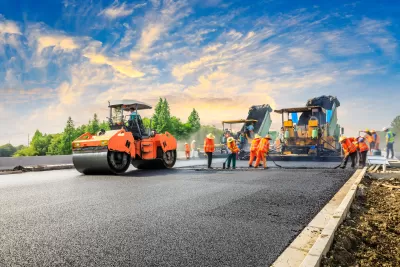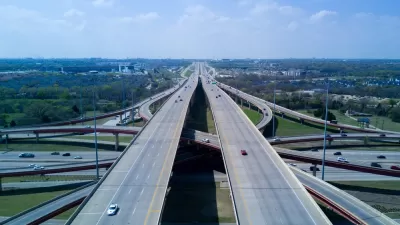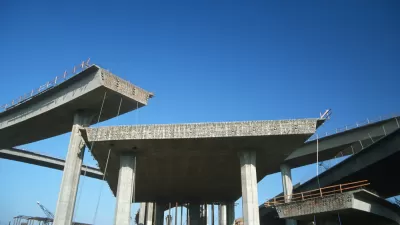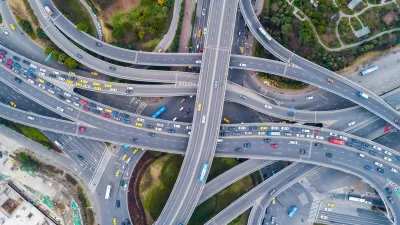A new report says states are creating a “climate time bomb” by spending more than half of federal infrastructure dollars on highway resurfacing and expansion over transit and passenger rail.

When it was passed in 2021, the $1.2 trillion Bipartisan Infrastructure Law was touted as a once-in-a-generation investment in the nation’s infrastructure, from ports, airports, rail, and roads to clean water, internet, and public transit — all with a focus on climate mitigation and resilience, equity, and safety.
However, of the reported funds disbursed to states, more than half (around $70 billion) has gone to resurfacing and expanding highways and just one-fifth has gone to public transit, reports Oliver Milman for the Guardian, citing a new analysis from transport policy group Transportation from America.
The Transportation from America report calls the spending a “climate time bomb” that it says will lead to greenhouse gas emissions of more than 178 million tons from planned highway expansions alone by 2040, only slightly offset by emissions-reducing measures funded by the bill.
“Nothing is fundamentally changing in terms of modes of transport. This much money going into highway expansion is, for one, a liability into the future, and two, it just doesn’t work. We’ve been expanding highways for decades on decades, and everyone consistently finds themselves stuck in traffic,” Corrigan Salerno, policy associate at Transportation for America told the Guardian.
FULL STORY: US spends billions on roads rather than public transport in ‘climate time bomb’

Alabama: Trump Terminates Settlements for Black Communities Harmed By Raw Sewage
Trump deemed the landmark civil rights agreement “illegal DEI and environmental justice policy.”

Planetizen Federal Action Tracker
A weekly monitor of how Trump’s orders and actions are impacting planners and planning in America.

The 120 Year Old Tiny Home Villages That Sheltered San Francisco’s Earthquake Refugees
More than a century ago, San Francisco mobilized to house thousands of residents displaced by the 1906 earthquake. Could their strategy offer a model for the present?

In Both Crashes and Crime, Public Transportation is Far Safer than Driving
Contrary to popular assumptions, public transportation has far lower crash and crime rates than automobile travel. For safer communities, improve and encourage transit travel.

Report: Zoning Reforms Should Complement Nashville’s Ambitious Transit Plan
Without reform, restrictive zoning codes will limit the impact of the city’s planned transit expansion and could exclude some of the residents who depend on transit the most.

Judge Orders Release of Frozen IRA, IIJA Funding
The decision is a victory for environmental groups who charged that freezing funds for critical infrastructure and disaster response programs caused “real and irreparable harm” to communities.
Urban Design for Planners 1: Software Tools
This six-course series explores essential urban design concepts using open source software and equips planners with the tools they need to participate fully in the urban design process.
Planning for Universal Design
Learn the tools for implementing Universal Design in planning regulations.
Clanton & Associates, Inc.
Jessamine County Fiscal Court
Institute for Housing and Urban Development Studies (IHS)
City of Grandview
Harvard GSD Executive Education
Toledo-Lucas County Plan Commissions
Salt Lake City
NYU Wagner Graduate School of Public Service





























